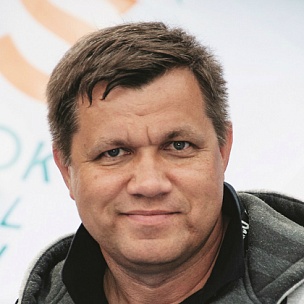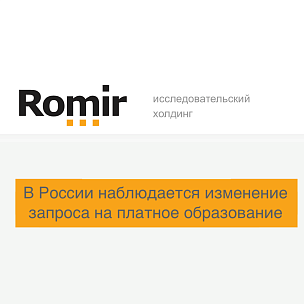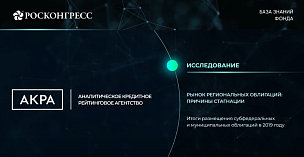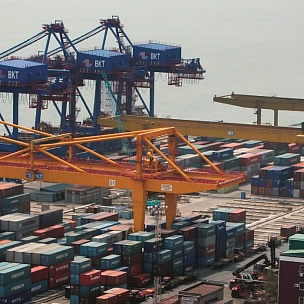The pandemic has sent shockwaves through the global economy, and has delivered a clear message to all nations: there can be no future without international cooperation, digitalization, and high-quality healthcare. It is not enough to possess rich reserves of natural resources steps also need to be taken to boost investment initiatives and enact positive social change. Today, these aims are beginning to be fulfilled with the introduction of advanced special economic zones and other incentives in the Russian Far East.
The eastern experiment
Russias main economic centres are largely located a great distance from the Far East. For many years, this made it hard to attract new investors. There was no rush to invest in the region, which for all its unparalleled opportunities, was challenging from the perspective of infrastructure and climate. Six years ago, however, two stimulus initiatives were launched advanced special economic zones (ASEZs) and the Free Port of Vladivostok (FPV). These initiatives were the first of their kind in Russia, and much progress has been made since then. Today, there are 22 ASEZs in the Far East (as well as the Capital of the Arctic ASEZ), while the FPV regime is spread out across 22 municipalities in five regions. Residents benefit from tax and administrative incentives, infrastructure subsidies, and concessional funding. And major projects are able to receive direct support for infrastructure.

All this has made it possible to implement new and ambitious projects in the Far East. For example, a coking coal mining and processing cluster has been built in Yakutia and is continuing to develop. Work is under way to develop a number of major deposits, including the Udokan and Baimskoye deposits. The Nakhodka Mineral Fertilizer Plant is under construction, as are several gas processing plants in Amur Region. Indeed, construction on this scale has not been seen since the days of the Soviet Union.
In total, more than 2,600 new investment projects are under way thanks to the Far Easts accelerated development system. Companies have signed investment agreements as ASEZ and FPV residents worth RUB 5.5 trillion. Of this figure, RUB 1.4 trillion has already been invested in the regions economies. More than 70% of this investment is in non-commodity enterprises which are contributing to economic diversification, developing cutting-edge technology, and helping workers acquire new skills. Around 66,000 new jobs have been created.

The Corporation for the Development of the Far East and Arctic is responsible for identifying potential investors for these regions and providing support for their projects. The organization offers a one-stop-shop for investors. Its areas of focus include attracting investment, managing incentive regimes, providing infrastructure in industrial areas, and social development.
The Eastern State Planning Centre is another key development institution. The organization conducts research and offers expertise and analysis in relation to the socioeconomic development of the Far East and Arctic. Project funding, meanwhile, comes under the purview of the VEB.RF state corporation.
New financial mechanisms are also being developed. Under current plans, up to RUB 500 billion will be raised over the next five years for social and infrastructure projects under the Ministry for the Development of the Russian Far East and Arctics Far East Concession programme. Essentially, the programme provides mortgages for infrastructure. Instead of spending public funds which are alone insufficient to meet the real needs of the region, the money is used as a means of attracting private investment for building social and utility infrastructure. A portfolio of high-potential projects has already been put together.
Together, these measures are helping to raise additional funding for new projects in the macroregion, and are playing a key role in efforts to achieve a qualitative leap forward in improving quality of life. President of the Russian Federation Vladimir Putin has approved the National Socioeconomic Development Programme for the Far East to 2024 and onwards to 2035. Of the 804 measures outlined in the programme, 600 have a social focus.

#NotSoFarEast
The Russian Far East benefits from a favourable position in the Asia-Pacific region, with it being in close proximity to a number of economic giants. These include China, with a population of 1.4 billion; the large and developed markets of Japan and South Korea; and Indonesia, Thailand, Malaysia, and Singapore.
Russian government policy on the Far Eastern Federal District has served as another important and effective stimulus for international investors. Two major developments in this regard have been the establishment of the Ministry for the Development of the Russian Far East and Arctic, and the Corporation for the Development of the Far East and Arctic. Tellingly, a third of all direct investment to come into Russia since 2014 has been directed to the Far East.
Eighteen countries have invested in the region, including China, Japan, India, South Korea, Australia, and Vietnam. More than 100 international companies are implementing projects worth a total of RUB 247 billion. Included in these are several major infrastructure construction projects. Notable examples include the construction of two transnational crossings: the RussiaChina highway bridge in Amur Region, and the NizhneleninskoyeTongjiang railway bridge in the Jewish Autonomous Region. The latter project will include 1,520 mmand 1,435 mm-gauge tracks to enable Russian and Chinese trains respectively to use the bridge alternatively. There are plans to export iron ore, coal, mineral fertilizers, forest products, and other goods to China via the bridge.
A number of major projects in Primorye Territory are also taking shape thanks to Korean investment. New manufacturing, agricultural, logistics, and hospitality businesses are all being established.

DIGITAL TECHNOLOGY
Two online portals offering assistance to investors in the region are already up and running. These focus specifically on aquaculture (aquavostok.ru) and the forest industry (лесвосток.рф). The latter site is currently being piloted in Transbaikal Territory and Khabarovsk Territory. Another online platform, entitled Digital State Planning, is also in the works, and will enable digital twins of entire regions and industries to be created. The Far Easts first IT park opened in Yakutia in 2018, with residents benefitting from all the resources they need. These include project packages; modern technology, services and equipment; and scientific and resource bases for each stage of creating a new high-tech product (design, development and market launch). One hundred and ten companies are already registered at the IT park, specializing in fields such as computational linguistics, AI, management platform security, mobile app development, robotics, augmented and virtual reality, cloud computing, wireless technology, and other innovative fields. This development was followed by the opening of another IT park in Yuzhno- Sakhalinsk last year. Its residents similarly focus on a range of areas, including digital solutions for the oil and gas, transport, and maritime industries. Several residents are also working to develop artificial intelligence, augmented reality, 5G technology, and automated systems for managing high-tech production processes. A centre of innovation is also slated to be built on Russky Island as part of the Far Eastern Federal University. The centre will serve as an international tech innovation hub and the Far Easts first Silicon Valley. It will offer an incentive regime and highly developed infrastructure, making it attractive to scientists, engineers, and entrepreneurs from around the world. The World Ocean, information and communications technology, and biotechnology have been identified as priority areas of research.

Similarly, Japanese investors are involved in a range of investment projects at advanced special economic zones and the free port. Last year, a major export contract to supply methanol with Japanese involvement was signed.
Elsewhere, discussions on joint ventures are ongoing with partners from the Asia-Pacific region and Europe. A number of promising areas of cooperation are being considered, including science, energy, the environment, agriculture, IT, tourism, and technology. A delegation representing a number of French companies recently visited several companies and learnt about highpotential projects in Primorye Territory, Sakhalin Region, and Kamchatka Territory. And the Australian business community is expressing interest in green energy projects.
The Eastern Economic Forum plays a key role in attracting new investment. The total value of agreements signed at the event in 2019 amounted to RUB 3.4 billion, and a great many agreements are similarly being prepared for this years edition of the Forum.
A land for the adventurous and enterprising
Despite its vast size, the macroregion is only home to around 10 million people. Large tracts of land remain unused and are essentially neglected, despite officially being under ownership. In order to address this issue, the government has recently set about making an inventory to identify landowners and clarify how the land is being used. Where appropriate, land will be transferred to businesses for specific projects.
The landmark Far Eastern Hectare programme is also continuing to be rolled out. More than 94,000 people
have applied to participate in the programme, with 64,200 hectares of land already being allocated. Recipients are using the land for a range of purposes, including farming (42%), building a house (38%), launching a business such as a cheese-making enterprise or car workshop (10%), or launching a tourist initiative (7%). The last option is proving particularly popular in more touristic regions, such as Primorye Territory, Kamchatka, and Sakhalin.
This year, the programme has been extended to the Arctic, and from August those who have successfully developed their plot of land will be able to receive another hectare for free.
After the collapse of the Soviet Union, it took many years before investors began to appreciate the potential of the Far East. Today, this treasure vault has thrown open its doors and is ready to make an economic leap forward. The Far East is becoming a flagship region for economic growth, as well as a dynamic centre of industry and innovation in the Russian Pacific.







